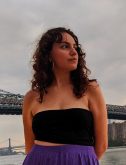Apply now to join our next cohort of Community Science Fellows and Community Leads!

Photo courtesy of Coal River Mountain Watch
Mining near Naoma, West Virginia employs the technique of mountain top removal to extract coal from the area. This requires large scale blasting of mountain tops which generate plumes of fine coal and silica particulate material that settles on local communities. Health concerns related to exposure to particulates motivates the desire to know the extent and frequency of blast plumes in the area.
Naoma, West Virginia is an unincorporated community in Raleigh County in the southern part of the state. The community faces significant challenges with 25% of people under 18 years old and 39% of children under 5 years living below the poverty level and an unemployment rate of nearly 17%. Although the coal mining industry dominates state politics and news media it accounts for less than 5% of the state’s employment.
Coal mining in the area makes use of “mountain top removal” to extract coal. This technique consists of using high explosives to blast large sections of mountain outcrops to rubble which is then removed by trucks. The blasting creates dust plumes of fine and ultra-fine coal and silica dust which can drift over and settle on the community. Recent research published in the Annals of the American Thoracic Society, (Pathology and Mineralogy Demonstrate Respirable Crystalline Silica is a Major Cause of Severe Pneumoconiosis in US Coal Miners, R. Cohen et. al., 2021) has shown that there is significant health risk in exposure to these particulates.
The community is represented by Coal River Mountain Watch, a non-profit organization dedicated to monitoring the impact of mining activities on the environment and health of the area.
The priority for the Coal River Mountain Watch is to understand the extent and frequency of exposure to blast generated particulate. To facilitate this particulate air monitors will be placed at strategic places within the community to collect a time series of particle settlement. This data will be used to create geographic information system (GIS) maps showing extent and frequency of plume events that can be shared with the community through the Coal River Mountain Watch mailing list.
While the search for a community scientist is underway the team will make test deployments of two particle monitors, one in an area relatively free of air particulates and the other in an area thought to have a high particulate load beginning in May 2022. Once a community scientist is on board, they will review the test data and establish a timeline for the project.
Community Leads
Vernon Haltom, Executive Director, Coal River Mountain Watch
Vernon Haltom has a BS in Mechanical Engineering (Aerospace Option) from Oklahoma State University and a BA in English Education from Northwestern Oklahoma State University. He served six years as an officer in the US Air Force, specializing in nuclear weapons safety and security. He then taught high school English for two years and English as a Second Language to college students for four years. He began volunteering for Coal River Mountain Watch in 2004 and has served on the staff since 2005, serving as executive director since 2011. He was involved in founding the regional Mountain Justice movement in 2004, the Alliance for Appalachia in 2006, and the Appalachian Community Health Emergency (ACHE) Campaign in 2012.
Junior Walk, Coal River Mountain Watch Outreach Coordinator
Junior Walk grew up on Coal River Mountain in Raleigh County, WV, taking part in traditional Appalachian activities such as harvesting ginseng and mushrooms. He worked for a time in a coal preparation plant and then as a security guard on a mountaintop removal site, where he learned firsthand the damage this practice had on the mountains and the communities below. He began working with Coal River Mountain Watch and other groups in 2009. In 2011 he was awarded the Brower Youth Award. Since that time his work has taken various forms, including lobbying on federal and state levels, gathering data for lawsuits against coal companies, and even getting arrested doing direct action at surface mines and corporate offices. In 2021 he was awarded a fellowship with Public Lab to help support his work monitoring the coal mines in his community via drones. Junior now serves as the outreach coordinator for Coal River Mountain Watch, monitoring coal mines in his community for environmental violations and guiding tours for visiting journalists and student groups.

Sabrina Chapa (she/they) is a Xicana from the frontlines of so-called South Texas (Karankawa land). She is a proud “Earth Protector at the intersections of just practice, biocultural ecology, and radical transformation”. She got her M.S. in Environmental Policy and Sustainability Management with a focus on Ecological Justice. She’s also a co-researcher with the Tishman Environment and Design Center and volunteers for her community.

David Murphy grew up in Western Washington state. After receiving bachelor’s degrees in Oceanography and Chemistry from the University of Washington he spent the next decade working in the field, first in Alaska then Maine, and finally in Texas. An interest in ocean sensors and data collection systems lead him to complete a Master’s degree in Electrical Engineering at Georgia Tech. He joined Sea-Bird Scientific, an oceanographic sensor and system company, as a senior engineer. Finally, retiring as Director of Research and Development.
The community leadership for this project is looking for a scientist to join the project with expertise in atmospheric science. Specifically monitoring and assessing aerosol and particle loads. Expertise in GIS is required to meet the goal of informing the community of frequency and extent of dust plumes created by blasting activity from local mining. The community is open to student engagement and remote participation.
Desired Skills and Expertise.
Thriving Earth Exchange asks all scientific partners to work with the community to help define a project with concrete local impact to which they can contribute as pro-bono volunteers and collaborators. This work can also position the scientists and communities to seek additional funding, together, for the next stage.
(c) 2024 Thriving Earth Exchange